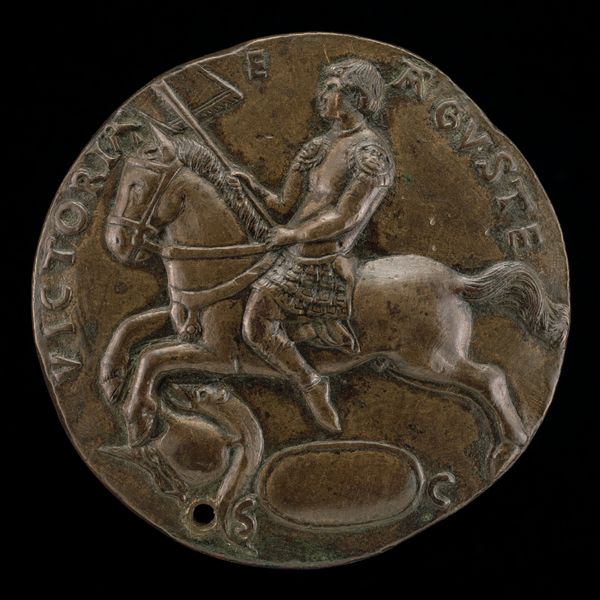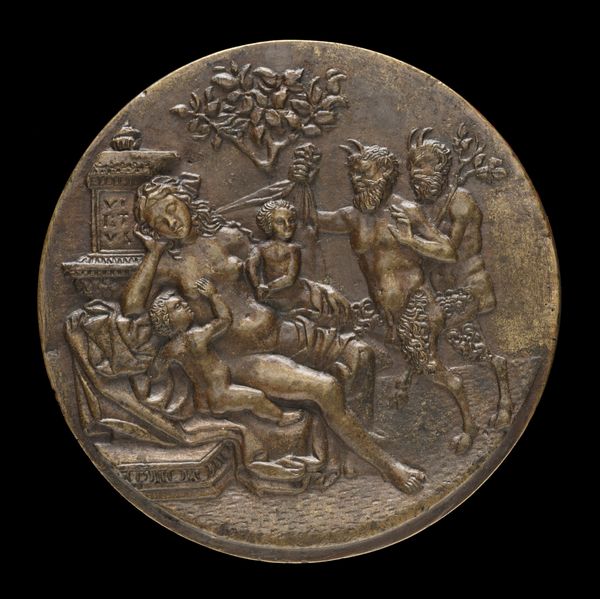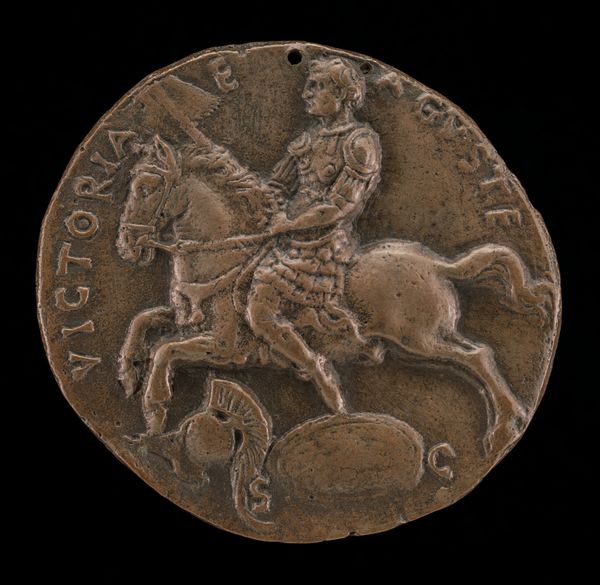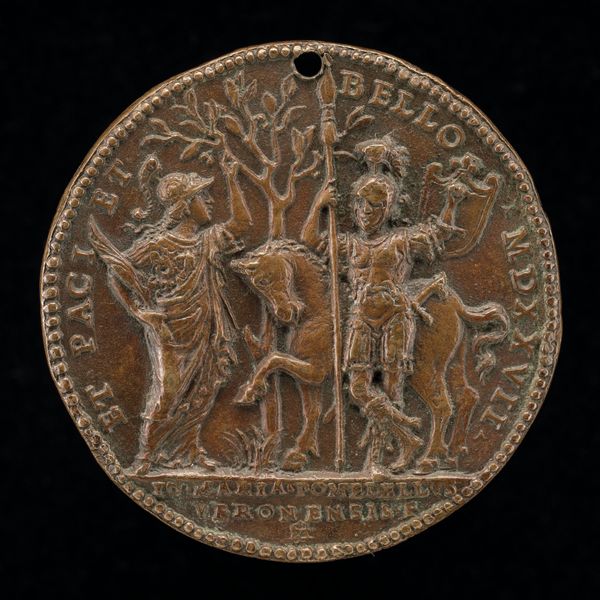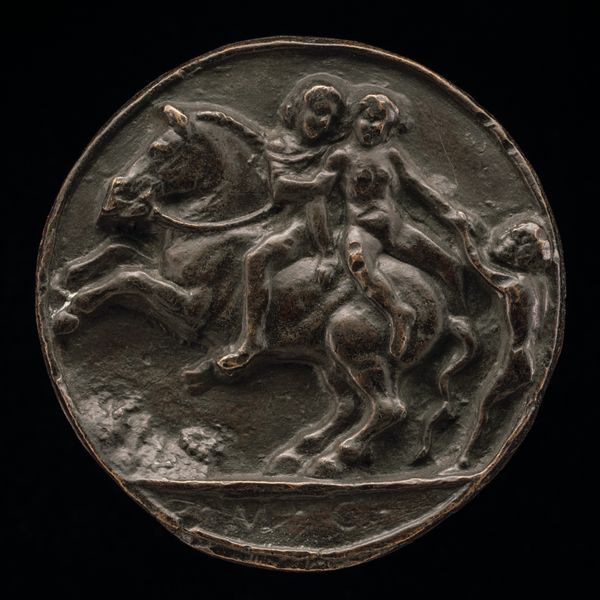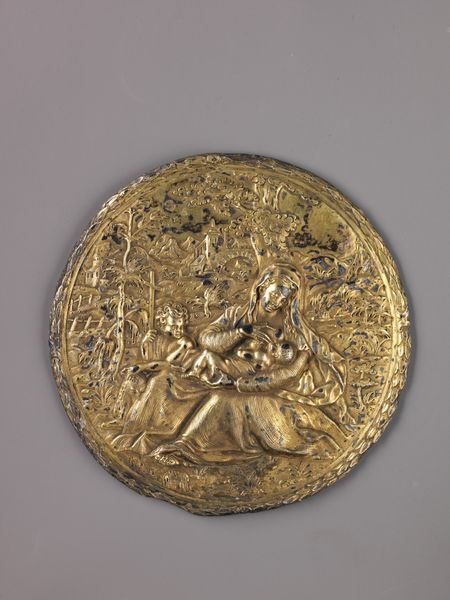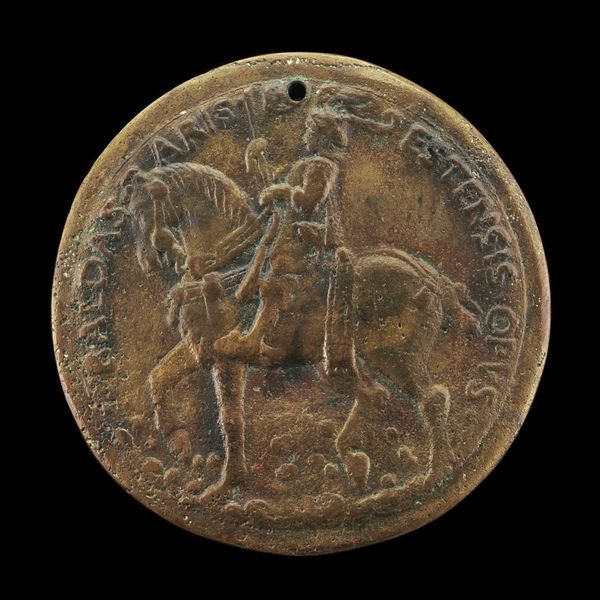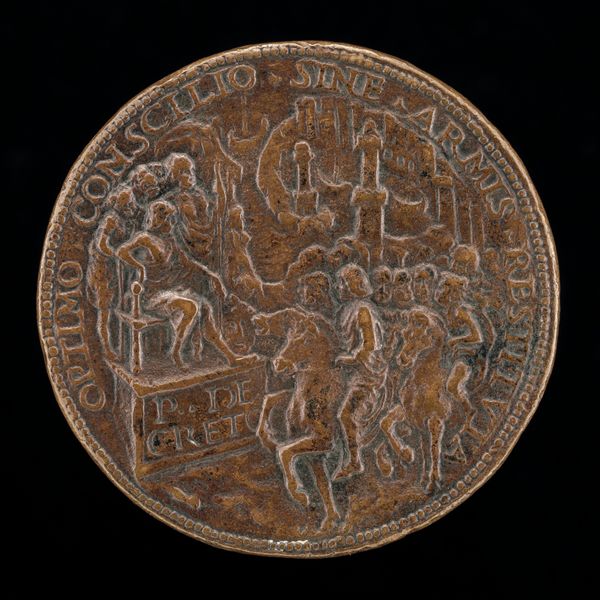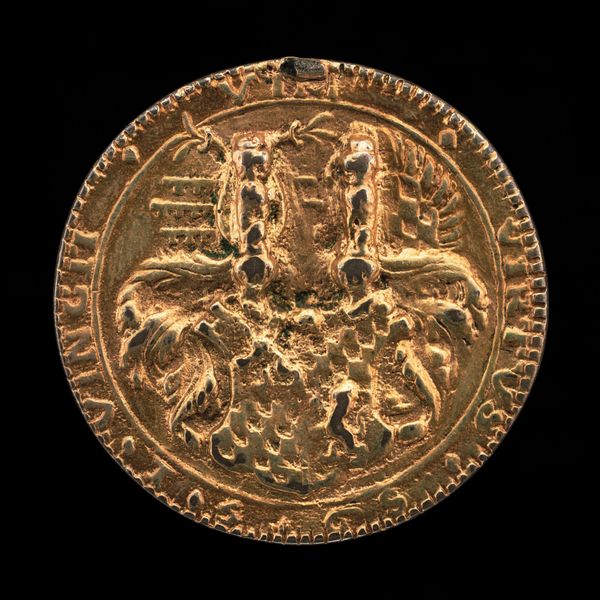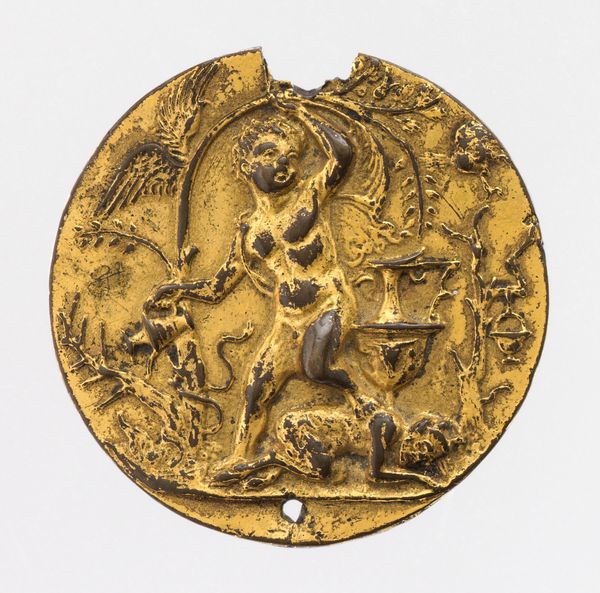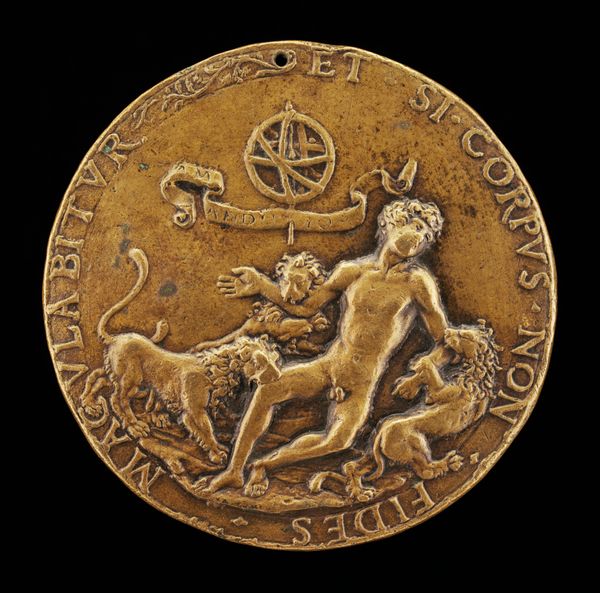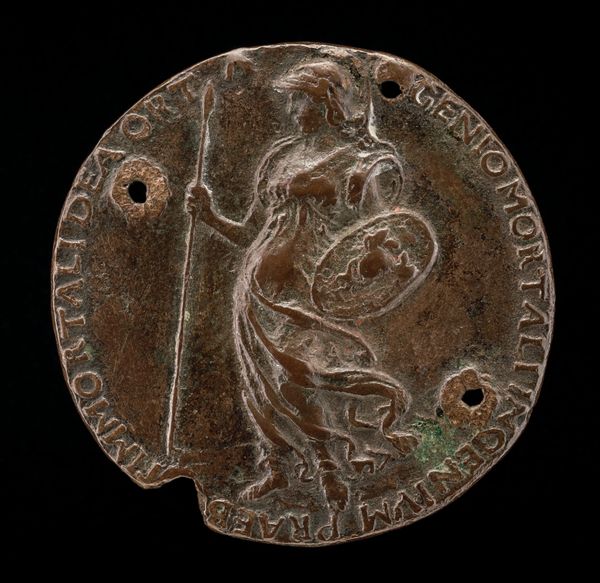
metal, relief, sculpture, engraving
#
metal
#
stone
#
sculpture
#
relief
#
figuration
#
sculpting
#
ancient-mediterranean
#
sculpture
#
engraving
Dimensions: overall (diameter): 4.13 cm (1 5/8 in.) gross weight: 14.26 gr (0.031 lb.)
Copyright: National Gallery of Art: CC0 1.0
Editor: Here we have “A Triumphant Warrior” by Antico, a metal relief with some engraving. The circular form reminds me of ancient coins or medallions, giving the scene of a chariot and its rider a powerful sense of historical importance. How would you interpret its visual storytelling, especially in light of its material and probable function? Curator: This piece reflects the political ambitions of the Renaissance through a careful revisiting of classical antiquity. Consider the very act of creating a medal, and not only is it inspired by ancient coinage, but the triumphant subject would remind contemporaries of Roman Emperors. In a world where power was still visualized in relation to the classical past, how would an object like this influence the perception, or even legitimize the power, of its patron? Editor: That’s fascinating! I hadn't considered the connection to power and legitimation so directly. So it's not just about artistic skill, but about communicating status? Curator: Exactly. The medal serves as propaganda on a small scale, easily distributed or worn. How does that change your understanding of it? Think of the various forms of propaganda during antiquity; relief carvings, coin imagery, military victory displays and triumphant celebrations were key for solidifying status and communicating military power. In this work, those traditions blend. Editor: So it's both art and a political statement! I suppose something small like this could travel and spread a certain image very easily. It’s definitely given me a new perspective on art as a form of persuasive rhetoric. Curator: And the reinterpretation of such objects provides powerful information regarding the politics of imagery through art history.
Comments
No comments
Be the first to comment and join the conversation on the ultimate creative platform.
